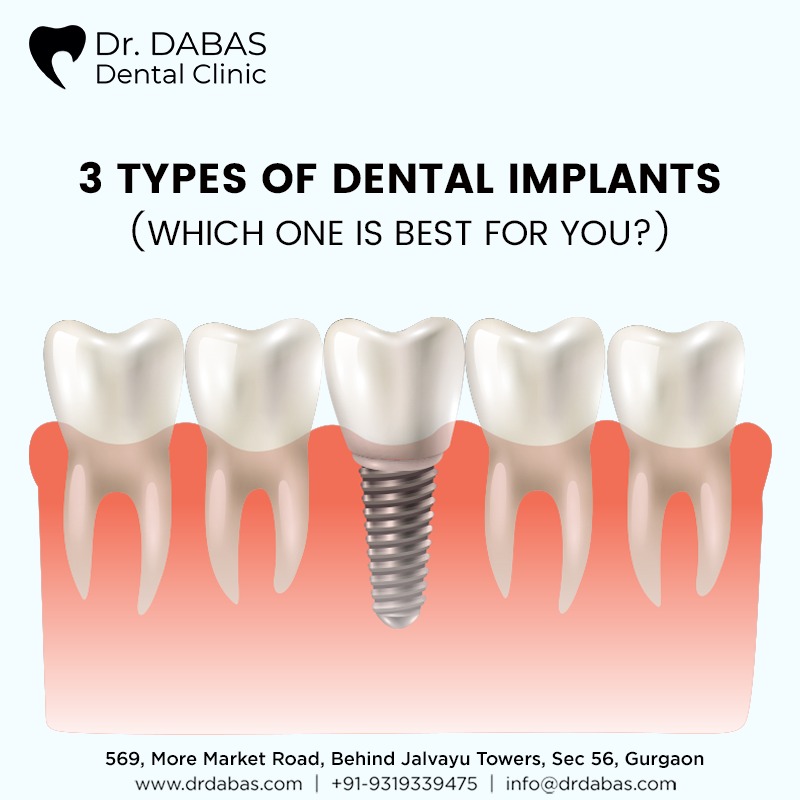A dental implant is a prosthetic replacement for a missing tooth. It consists of a titanium post surgically placed into the jawbone beneath the gum line, acting as an artificial root. This post provides a stable foundation for a dental crown, bridge, or denture to be attached securely. Dental implants look, feel, and function like natural teeth, offering a long-term solution to restore oral health and confidence. Dr. Dabas specializes in implant dentistry, ensuring precise placement and personalized care for each patient. With dental implants, patients can enjoy improved aesthetics, speech, chewing ability, and overall oral well-being.
What is a Dental Implant?
A dental implant is a sophisticated dental procedure used to replace missing teeth. It involves surgically inserting a small titanium post into the jawbone, acting as an artificial tooth root. This post fuses with the bone through a process called osseointegration, providing a stable foundation for attaching a prosthetic tooth or crown. Dental implants are renowned for their durability, functionality, and natural appearance, mimicking the look and feel of natural teeth. They offer numerous benefits, including improved chewing ability, speech, and oral health. Dental implants are considered a long-term solution for tooth loss, restoring confidence and quality of life for patients.
Dental implants have revolutionized modern dentistry by providing a durable and natural-looking solution for replacing missing teeth.
There are three primary types of dental implants, each with its unique advantages and suitability depending on the patient’s specific needs:
1 Endosteal Implants: Endosteal implants are the most common type and involve surgically placing titanium posts directly into the jawbone. These implants provide a sturdy foundation for attaching individual crowns, bridges, or dentures. Endosteal implants are versatile and suitable for most patients with adequate jawbone density. They offer exceptional stability and durability, mimicking the function of natural teeth effectively.
2 Subperiosteal Implants: Subperiosteal implants are an alternative for patients with insufficient jawbone density to support traditional implants. Instead of being placed within the bone, subperiosteal implants rest on top of the jawbone but underneath the gum tissue. A metal framework is custom-made to fit the contours of the jawbone, with prosthetic teeth attached to it. Subperiosteal implants eliminate the need for bone grafting procedures and are ideal for patients who cannot undergo invasive surgery.
3 Zygomatic Implants: Zygomatic implants are utilized when there is insufficient bone in the upper jaw to support traditional implants, often due to bone loss or anatomical limitations. Instead of anchoring into the jawbone, zygomatic implants are anchored into the zygomatic bone, also known as the cheekbone. This technique bypasses the need for bone grafting and offers a stable solution for full-arch restorations in the upper jaw.
Choosing the right type of dental implant depends on various factors, including jawbone density, oral health, and personal preferences. Consulting with a qualified dental implant specialist like Dr. Dabas can help determine the most suitable option for achieving optimal oral function and aesthetics.

